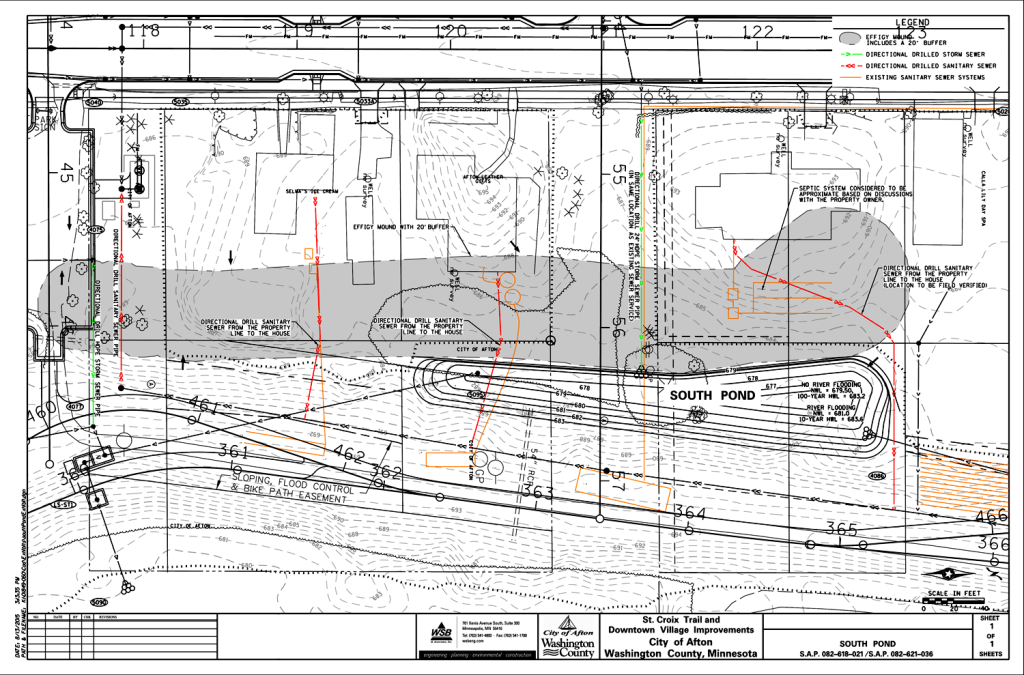Overwhelming Tribal Rejection of MPCA’s “No Adverse Effect” Finding on the Afton Effigy Mounds…All Four Federally Recognized Dakota Nations in Minnesota Unite to Voice their Objections to the Wastewater Treatment Facility
The recently complete comment period for “consulting parties” in relation to the Afton Wastewater project has compiled a record of overwhelming objection to the (Minnesota Pollution Control Agency’s (MPCA’s) finding that there will be “no adverse effect” of the project on the Afton Effigy mound and other mounds in the mound group, a site which consultants have stated is eligible for listing on the National Register of Historic Places. Not a single tribal group from within and outside Minnesota has agreed with the MPCA. All their comments must be read carefully by anyone seeking to form an opinion about the effect of the wastewater project on this sacred and culturally important place.
 All these comments will be transcribed and made available on this website. To start with here is a transcription of the letter submitted by all four federally recognized Dakota communities in Minnesota, located at Prairie Island, Shakopee, Lower Sioux, and Upper Sioux. In an unprecedented and eloquent letter the communities unite in their rejection of the MPCA’s finding.
All these comments will be transcribed and made available on this website. To start with here is a transcription of the letter submitted by all four federally recognized Dakota communities in Minnesota, located at Prairie Island, Shakopee, Lower Sioux, and Upper Sioux. In an unprecedented and eloquent letter the communities unite in their rejection of the MPCA’s finding.
September 1, 2016. Letter to Corey Mathisen, Minnesota Pollution Control Agency, 520 Lafayette Road North, St. Paul, MN 55155-1194\(p) 657-2554
RE: Notification of MPCA Findings-Section 106 Review-Afton project-Mni Sota Dakota Nation Response
Dear Mr. Mathisen:
Thank you for initiating consultation with the four Mni Sota Dakota Nations (Prairie Island Indian Community, Shakopee Mdewakanton Dakota Community, Lower Sioux Indian Community, and the Upper Sioux Indian Community) Tribal Historic Preservation Offices (the “THPO”). We appreciate the opportunity to provide comment on your proposed undertaking. Unfortunately, we have had vacancies in some of our THPO staff and only now are able to forward response. We would like to provide additional response as soon as possible.
In accordance with 36 CFR 800.5(c)(2)(i) the four Mni Sota Dakota Nations disagree with the Minnesota Pollution Control Agency (the “MPCA”) which was the Lead Federal Agency for completion of the Section 106 Findings (the “Findings”) through a programming agreement with the U.S. Environmental Protection Agency regarding Rattlesnake Mound Effigy Group, Site 21 WA 10.
It is heartening to have affirmation in the Findings and the Phase II Archaeological Assessment and Evaluation of the significance and importance of the Rattlesnake Mound Effigy Group. Also it is significant for the various stakeholders and consultants to acknowledge and appreciate that this site has been negatively impacted previously and such impacts should be address. However, to say that the wastewater project will actually help the Rattlesnake Mound Effigy Group does not make sense.
With the site’s significance, rehabilitation and mitigation should be done in the first place even though there have been impacts from previous construction. Even permitting directional drilling under the Rattlesnake Mound Effigy Groups does not appear to protect or respect the site and its significance. Regarding undisturbed and disturbed burial sites exterior to the Rattlesnake Mound Effigy, we are not confident that those have been completely identified to date. No one can assure that the previously impacted areas do not have human remains that may surface with new earthwork. These are just some of the concerns we wish to have addressed prior to any construction.
Further, at a minimum our THPO Officer(s) or their designee(s) should be present if construction moves forward in case human remains are discovered and other cultural patrimony are identified.
We appreciate how the law looks at such matters. However, from cultural and spiritual perspectives any disturbing of the Rattlesnake Mound and surrounding area no matter the size of the buffer zone or that it has been disturbed before is extremely concerning[,] requiring further attention. This area is a sacred site eligible for designation as a National Historic Place [National Register of Historic Places] meeting at least three criteria for such a designation. Further disruption and disturbance would be a clear hindrance to protecting the historic properties of the site.
Therefore we disagree with the Findings and demand additional dialogue and consideration as to the appropriate ways to protect the Rattlesnake Mound Effigy Group and its surrounding area including further consultation and participation in the process.
Please consider the four Mni Sota Dakota Nations as consulting parties to the Afton City Project and continue to update our THPO staff on the project.+
Lower Sioux Indian Community, By Robert Larsen, President
Prairie Island Indian Community, By Shelley Buck, President
Shakopee Mdewakanton Dakota Community, By Charles Vig, Chairman
Upper Sioux Indian Community, By Marisa Anywaush, Vice Chairman for Chair Kevin Jensvold
 Bonnie McGee wrote:
Bonnie McGee wrote:



